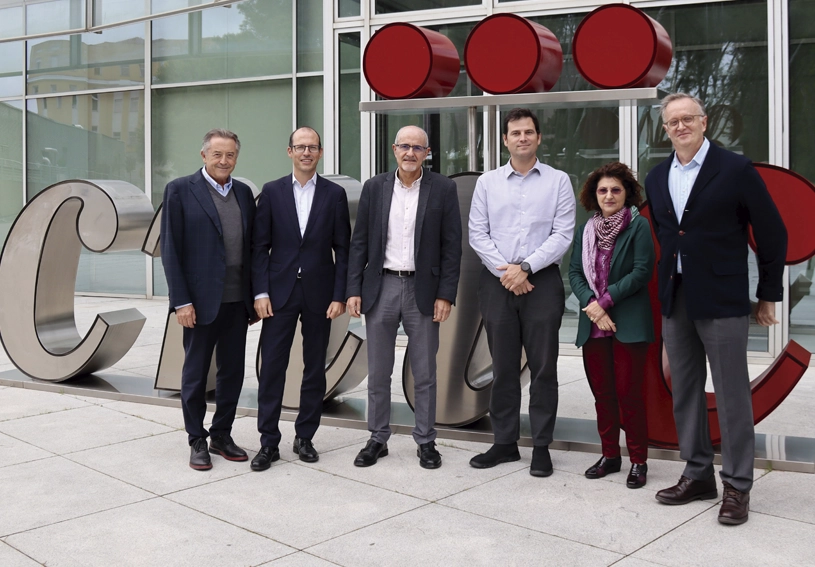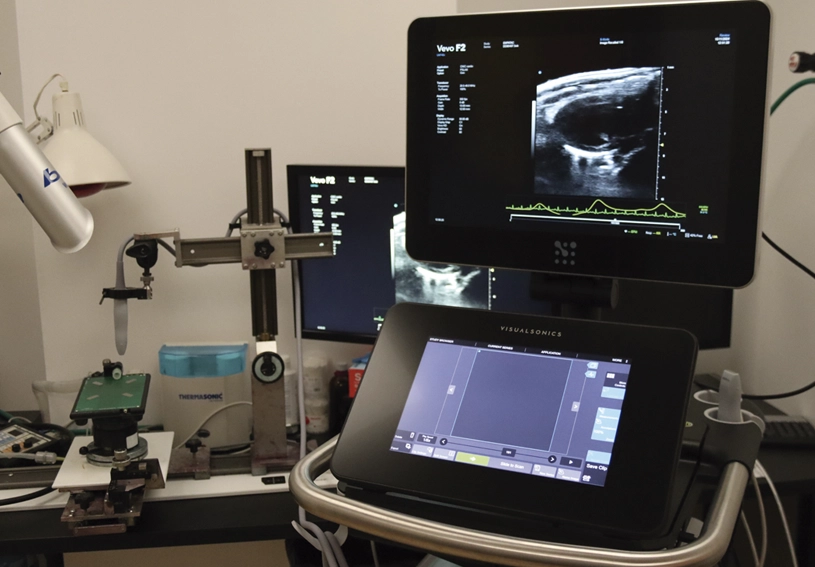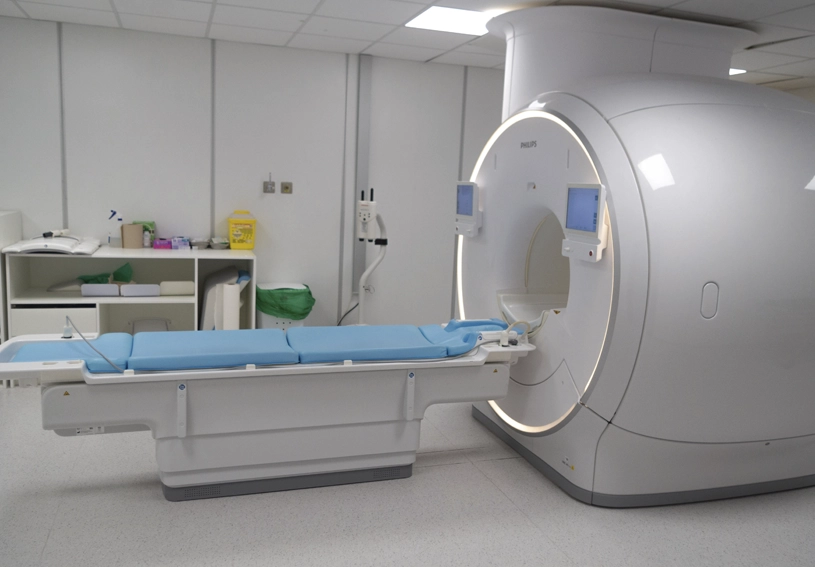Distributed Biomedical Imaging Network (ReDIB): A decade promoting scientific research

In the last ten years, the Distributed Biomedical Imaging Network (ReDIB) has consolidated its position as a vital infrastructure for biomedical research in Spain, offering access to advanced technologies in biomedical imaging to national and international researchers. This initiative, coordinated by the National Center of Cardiovascular Research (CNIC) and financed by the Ministry of Economy and Competitiveness as a Unique Science and Technology Infrastructure (ICTS), has made it possible to overcome the barriers and allow access to expensive and specialized technology, promoting the advancement of science in several fields.
ReDIB was created in 2014 in response to the scientific community’s increasing need to access advanced biomedical imaging tools. When it first started, it was made up of two founding nodes: the CNIC in Madrid, with its Advanced Infrastructure for Translational Imaging (TRIMA-CNIC) and the CICbiomaGUNE in San Sebastian, with its Molecular and Functional Imaging Platform. Later, in 2018, the Complutense Bioimaging Center (BioIMAC) of the Complutense University of Madrid and the PREBI-GIBI230 (La Fe Imaging) of the La Fe University Hospital of Valencia also joined. (https://www.redib.net/redib)
The CNIC’s scientific-technical biomedical imaging infrastructures are indispensable for the development of a scientific and technological research that is unique and exceptional in its kind, with a very high cost of investment, maintenance and operation. Their importance and strategic nature justify their availability to the whole Research Development and Innovation group.
The creation of these infrastructures facilitates the collaboration and cooperation of their capacities among them. In many cases they are geographically spread out in Spain, this allows their critical mass to increase, improve the competitiveness of the group, and avoid duplications and redundancies.ReDIB works under a single-window model, with a coordinator from the CNIC who manages its operation. Each node has its own structure of self-management, with a node manager and highly trained specialists and technicians who use state-of-the-art technologies.
Currently, ReDIB has 16 strategic facilities hosting 49 advanced technologies. These include tools for molecular, functional, multi-modal, and sequential imaging studies, as well as advanced microscopy, manufacturing of nanoparticles, radiochemistry and clinical and preclinical tests. The nodes also have infrastructures for animal-testing, certified laboratories and specialized operating rooms.
The importance of biomedical imaging studies was demonstrated by Dr. Valentín Fuster, General Director of the CNIC, President of Mount Sinai Heart and Medical Director of Mount Sinai Hospital of New York, through projects like Bioimage and PESA CNIC-Santander, which are some of the most representative in clinical research and have proven the usefulness of imaging techniques for the detection of the atherosclerotic disease, long before the appearance of clinical symptoms. The TRIMA@CNIC node, as the founding node of ReDIB, has provided advanced technologies, both in clinical and preclinical imaging, through its basic and translational units; it has also described new study and interpretation imaging techniques that allow for more precise and efficient evaluations.
ReDIB does not establish limitations on the acceptance of potential users, as it responds to national and international requests in all the sectors, especially the medical and pharmaceutical ones, but also in the agriculture and industry sectors, among others. It offers services to public and private entities, from non-governmental organizations, universities, research centers and hospitals. Users have access to the biomedical imaging facilities of ReDIB through an easy access protocol, with different service offering modalities, depending on the requesting user´s profile and the complexity of the studies requested.
Competitive Open Access
ReDIB is considered an ICTS because it possesses three fundamental characteristics: it is publicly owned, its facilities have unique technology, and these facilities are open to the research community by competitive access. The infrastructures that are considered to be essential are those that contribute significantly to the uniqueness of the network. At least 20% of its total capacity is offered to the users of the scientific and technologic community in competitive open access (COA) calls.
During the last 10 years ReDIB has offered COA calls (https://www.redib.net/convocatorias) to researchers from different countries, through a defined and public access protocol. The applications are evaluated on the basis of scientific-technical excellence criteria and technical viability, regulated by a protocol which establishes the frequency of the COA calls. This protocol is applied by an Access Committee that is external to the ICTS, that can count on the support of experts that belong to the infrastructure. https://www.redib.net/upload/secciones-publicas/redib-02-pda-protocolo-acceso_original.pdf

The COA mechanism is easy and includes: 1) review of the technical viability of carrying out the presented project at one of the network facilities; and 2) evaluation of the relevance and scientific quality of the application by an expert advisory committee. After the review and evaluation of the proposals presented, the accepted applications are classified in two categories according to the score that they have obtained in the review with the advisory committee: 1) with the assigned usage time and, 2) on hold. This way a prioritized waiting list can be created which can minimize the risk of overdemand of the facilities.
In these last 10 years, ReDIB has acquired new infrastructures and updated others so as to offer better features and capabilities to the scientific community
In these last 10 years, ReDIB has acquired new infrastructures and updated others so as to offer better features and capabilities to the scientific community. For example, for preclinical studies it is worth mentioning the purchase of a PET/SPECT/CT system, a 9 4T MRI and the upgrade of 7 T and 11 T MRI system components.
For the clinical studies, it is worth mentioning the purchase of a new spectral CT device, a PET-CT, and a 3T MRI; as well as the upgrade of existing 3T MRI and PET/MRI facilities. The modernization of these infrastructures has been carried out using proper funding from each node or through European aid funding: FEDER funds or specific programs for ICTS funding through the Recovery, Transformation and Resilience Plan.
Furthermore, the COA calls not only give access to optimized state of the art imaging services at subsidized prices, they also allow: 1) Access to certified facilities, that guarantee high-quality reproducible quantitative data; 2) Access to scientists and technicians experts in imaging who can address the full potential of the facilities; 3) Access to new applications and new protocols for image acquisition and data analysis; 4)Access to new collaboration opportunities among researchers and imaging networks; and 5)Communication with technical staff that can offer ongoing orientation and short response time to users.
Since its creation, ReDIB has launched 14 COA calls, in which 166 projects have been presented, and 161 have been accepted, which represents an acceptance rate of 96,9%. The proposals are evaluated according to criteria of scientific excellence, technical viability and potential impact, and are reviewed by an external committee of experts.
Regarding the sector of origin of the 166 projects, 69% are from the academic sector of universities and research centers, and only 2% are from companies or societies of the industrial sector. This may be related to a lack of permeability of ReDIB in these sectors, in terms of communication and applicability. Regarding the subject matter of the proposals, of the 161 approved projects, 142 (88%) are from the subject matter of Biomedicine, 13 (8%) from Bioscience and Biotechnology and the other 6 from other scientific knowledge areas (energy and transport, environmental science and technologies and material technologies). Regarding the country of origin of the international proposals presented in the COA calls during the above-mentioned period, there were 10 projects approved from 5 different countries: four from France, two from Portugal and Great Britain, and one from Ireland and another one from Australia.
The projects supported by ReDIB have generated a significant impact on scientific research. Between 2020 and 2024, 144 competitive accesses were granted, which resulted in the publication of 103 scientific articles in journals classified with impact factor, 36 conference presentations and 3 technical reports.
The average impact factor of the journals has displayed a constant increase, growing from 5.01 in 2020 to 8.81 in 2023. In addition, 69.7% of the publications were issued in high-impact journals (Q1), and these investigations have summed up a total of 927 citations, proving their relevancy in the scientific community.

The 103 scientific articles were published in 83 different journals, and the average impact factor of the journal (year of publication) varied from 5,01 to 8.81. The journals with greater impact factor, and which show results obtained from the use of the network infrastructures, were Cells, European Heart Journal, Circulation, Neurotherapeutics and Journal of the American College of Cardiology. In these 5 years, on average 69,7% of all the articles were published in the Q1 journal of its field and have been cited by other authors a total of 927 times.
During the last decade, ReDIB has significantly invested in the acquisition and upgrade of technologies that allow them to stay at the forefront. Among these acquisitions, some that stand out are the PET/SPECT/CT systems, high-field MRIs (9.4 T and 7T) and clinical equipment like PET-CT and 3T-MRI. These improvements have been financed through European funds (FEDER) and national programs, which have made it possible to expand the network capacity, in order to handle more ambitious and complex projects.
In its 10 years of existence, the ReDIB has proven to be an essential infrastructure in Spain which facilitates the access to advanced biomedical imaging technologies, especially in clinical and preclinical research. Since its creation in 2014 and the incorporation of new nodes in 2018, ReDIB has expanded its service capabilities and increased its scientific impact, with the increase in the quantity and quality of scientific publications. Its management model, which includes a single-window model and an Access Committee for the evaluation of proposals, has contributed to a high acceptance rate of applications, the optimization of the use of available resources, and the allocation of these in a transparent manner.
Despite its success, ReDIB also faces challenges in terms of outreach. Although most of the applications come from academic and research institutions, the interest from the private sector is still limited, representing only 2% of the applications received. This highlights the need to strengthen the communication with technological and pharmaceutical companies, as well as promoting the internationalization of the network.
Furthermore, the growth of demand to access the infrastructures demonstrates the importance of continuing to optimize the management of resources and guaranteeing the long-term sustainability of the network.
Impact on Biomedical Research
The impact of ReDIB is reflected in the scientific advances that have been achieved thanks to its support. Emblematic projects like PESA CNIC-Santander and Bioimage have demonstrated the usefulness of imaging technologies in the detection of diseases such as atherosclerosis in early stages, long before the appearance of clinical symptoms. These initiatives have proven how valuable the network is as a strategic tool for translational research.

In its 10 years of history, ReDIB has established itself as an essential infrastructure for scientific research in Spain, offering access to state-of-the-art biomedical imaging technologies. Its efficient management model, combined with the continuous modernization of its facilities, have permitted a notable increase in the quantity and quality of scientific results.
Nonetheless, the potential of ReDIB has not yet been completely exploited. Expanding its reach to the private sector and internationalizing its impact will be key steps to guarantee that this network continues being a motor of innovation and development in the next decade.













